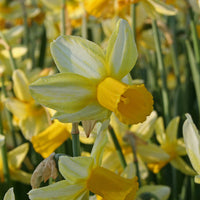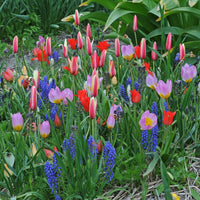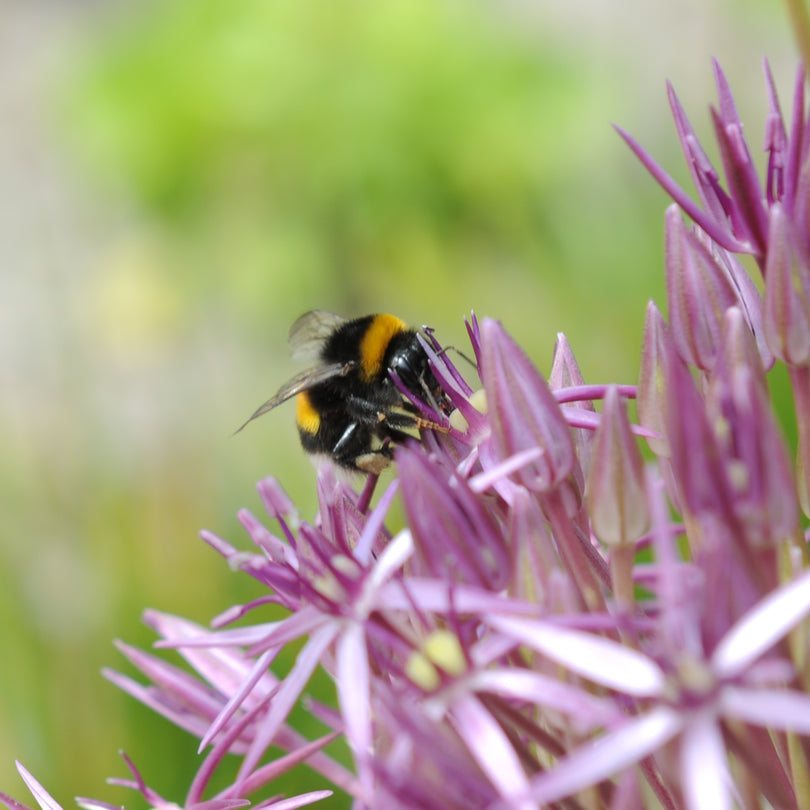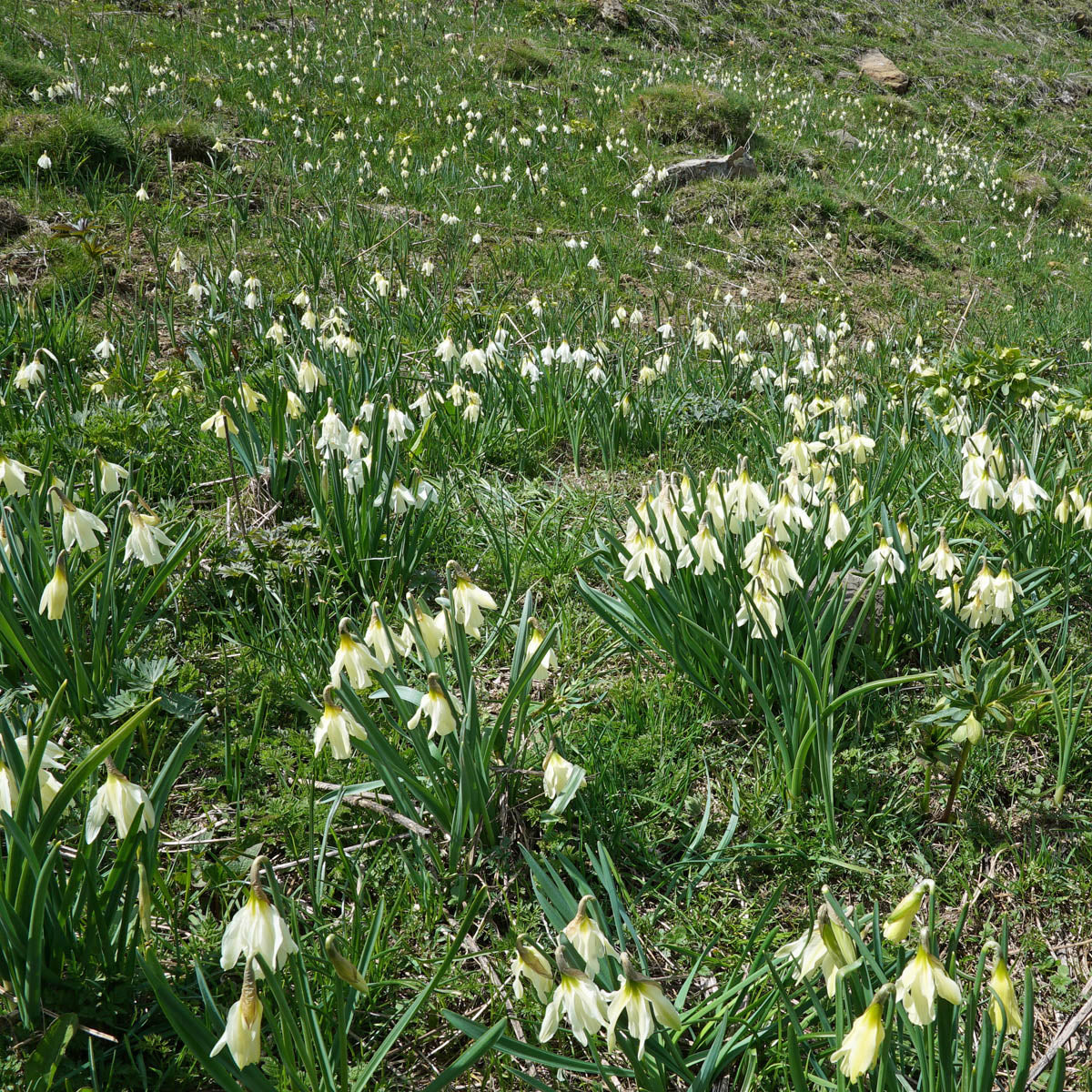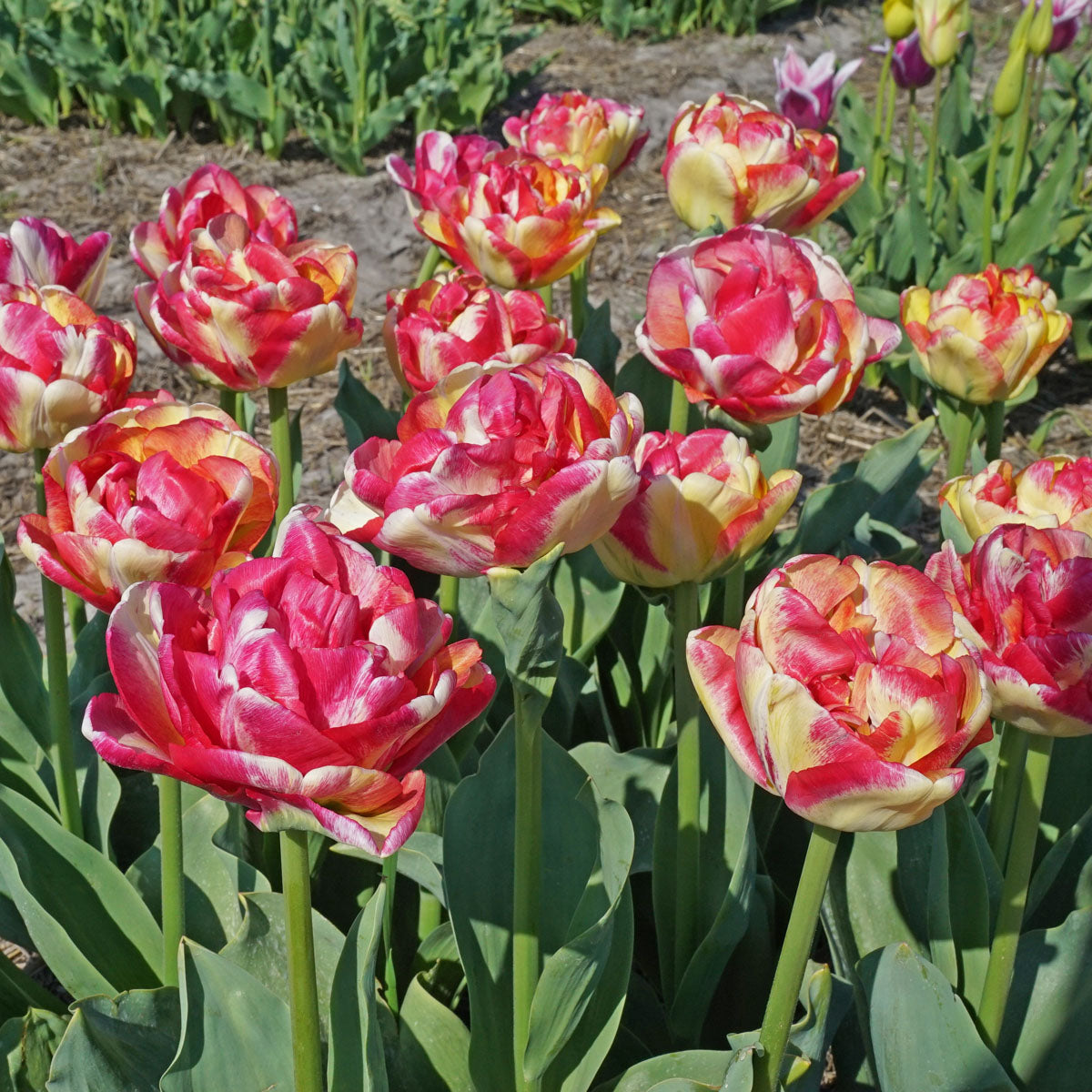The Pyrenees
Once again I will try to tell you the beautiful story of my expedition to the Pyrenees with some good Daffodil friends.
But first we would like to warn you about a few major dangers that threaten you, as a flower bulb lover, in your garden.
First the Lily Beetle. Before I went to Spain I was pleasantly surprised that the Lilies in the Pots behind my house were so little bothered by the Lily Beetle this spring. How different it was when I got home, I saw it everywhere, starting nibbling of that nasty little creature.
Luckily I still had time, not many leaves had been nibbled away but they were there. Over the years I have developed a trained eye that quickly detects the first signs of the v.
Because I think it is important for you to know, here is a crash course on the Lily Beetle for beginners.

The first and most obvious signal are those red beetles that you can find here and there on the lily plants. They often don't just sit on the lilies, they often also sit on each other. Since I don't have the exact age of my newsletter readers in mind, I won't explain in detail what they are doing, let's just say that they are giving each other a hug.
These, actually quite beautiful beetles are not the culprits, they do not eat your Lilies bare. Yes, they do gnaw a hole here and there in a leaf of a Lily but they do not eat the whole leaves away.
If you see these beetles on your Lilies, it is time to be on your qui-vive. All that cuddling will produce eggs and from those eggs come the culprits; the larvae or caterpillars of the Lily Beetle.
These eggs are hard to find, they are always on the underside of a leaf and are visible as a small line. When they are just laid they are a beautiful red colour but they quickly turn black. For the readers among us who are now reading with reading glasses on it will be a hell of a job to find these eggs. But I always go down on my knees to search whether I can see such lines on the underside of the leaf. If so, I wipe them off with my thumb.
The next picture of the attack is the appearance of glassy spots on the leaf. Here in the picture a few eggs and a few newly hatched caterpillars that are starting to eat away the first layer of the leaf. This is the underside of the leaf, from above you only see a few glassy spots on the leaf where the chlorophyll is missing.
Then the caterpillars grow bigger and go to the end of the leaf. Here they start to eat the leaf greedily and the eaten leaf is of course pooped out again and then, yuck, placed over their body like a warm blanket, gross huh.
In the photo you see the black heads of the caterpillars nibbling away at the leaf edge. And these, dear newsletter readers, are the real culprits. These are the creatures that can cause great damage to your Lilies if you do not pay attention to them.
When the caterpillars are fully grown, they fall off the plant and pupate into the Lily Beetle, after which they start cuddling eggs together again.
So ladies, send your husband outside and tell him to check the Lilies in your garden for such black lumps of shit and tell them to remove them. You can of course do it yourself but, even if it is just pulped Lily pad, it feels quite dirty. It is great when your husband does it, isn't it? And for the ladies who live with ladies, like Petra, ask Monic to do it.
But seriously, if you see Lily Beetles, or discover the larvae, by removing them regularly, you can still enjoy Lilies in your garden. It is a piece of cake and do not let Het Leliehaantje discourage you from enjoying this beautiful flower bulb.
The other major danger in your garden is the Snail.
This spring we have already received a number of reports of snails in the Daffodils, yes this is a Daffodil in the picture. This horror image was made in Nelleke's garden in The Hague. Even though snail damage is not fun, in the spring I always find it to be quite bearable. You see some feeding here and there but, with one exception, most spring flowers come into their own.
How different can it be with the Dahlias. At the moment that the Dahlias start to grow, the snail population is at full strength and a budding Dahlia works like a magnet on a snail.
Make sure you keep a close eye on the snails from the start, because it would be a shame if not all the Dahlias could see daylight because they were eaten by the snail every night.
The worst is the slug, you know, that nasty creature that, quite rightly by the way, was thrown out of the house by the Escargot family. She is completely crazy about the Dahlia.
I can't give you a crash course on snails, there are dozens of ways to find on the internet to fight the snail. Garlic, eggshells, mint, shells, beer traps, chickens, breadcrumbs, snail pellets, even if it's dark, get your husband outside again, I really have no idea what works best. Fight the snail because we have received many complaints in the past that the Dahlias did not come up and upon closer inspection it turned out that this was almost always the snail that made a round every night and devoured the sprouts that just came above the ground. It would be a shame if that happened to your Dahlias too.
Here I am again at a thousand words and I have failed to tell about Spain. Next week, I promise.
Kind regards,
Carlos van der Veek

